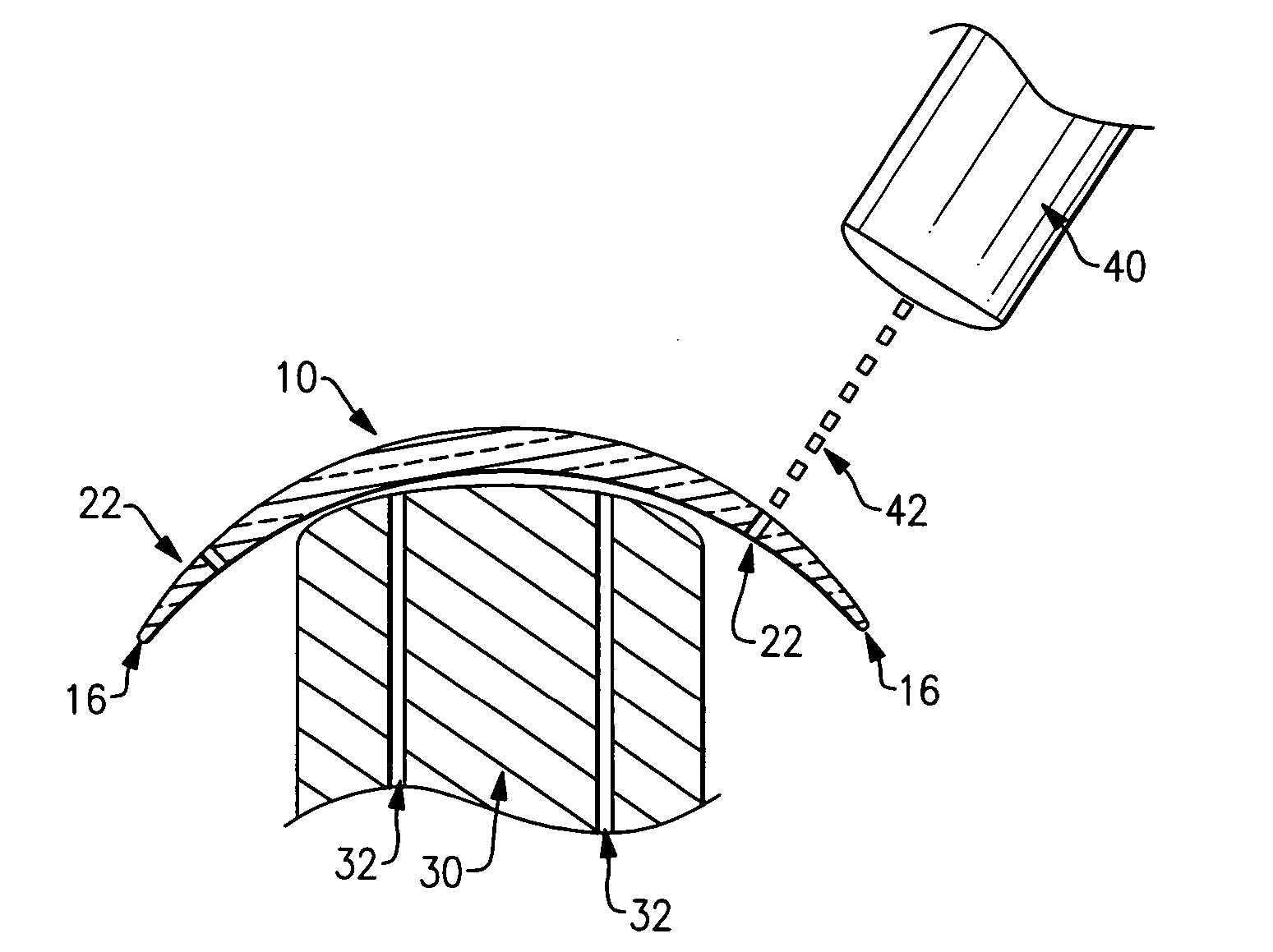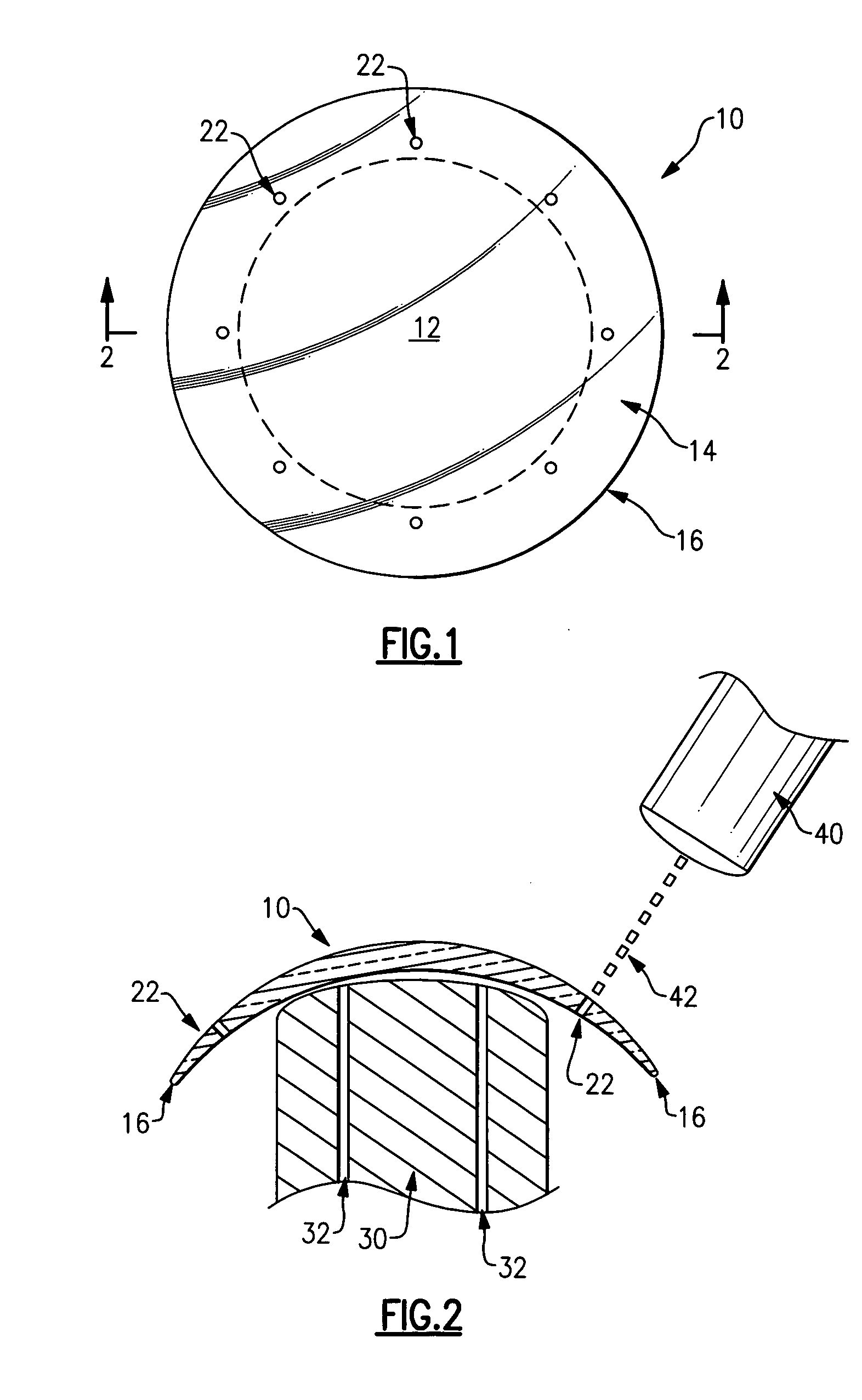Femtosecond laser micromachining of a contact lens and a contact lens manufactured thereby
a technology of micro-machining and contact lenses, which is applied in the field of manufacturing contact lenses, can solve the problems of discomfort in wearing contact lenses, the damage of the contact lens area, and the description apparatus has not gained commercial popularity, and achieves the effect of reducing heat-related damag
- Summary
- Abstract
- Description
- Claims
- Application Information
AI Technical Summary
Benefits of technology
Problems solved by technology
Method used
Image
Examples
Embodiment Construction
[0020]FIG. 1 shows an anterior end view of a contact lens 10 suitable for being manufactured using the method in accordance with the invention. FIG. 2 is an enlarged cross-sectional view of the contact lens 10 of FIG. 1 as viewed along 2-2 being manufactured using the method of the invention. As explained below, an advantage of the invention is in providing a method for laser micromachining contact lens 10 to provide various features thereon. In this regard, the invention allows provision of features such as fenestrations, channels, and / or angulations on the contact lens 10 that are substantially free of heat related damage to the surrounding regions. Of course, the method of the invention may be used to provide different features on the contact lens, for example, to manufacture the peripheral edge of the contact lens.
[0021] As shown in FIGS. 1 and 2, the illustrated example contact lens 10 includes a central portion 12 that covers the cornea of the wearer of the contact lens 10 to...
PUM
| Property | Measurement | Unit |
|---|---|---|
| wavelength | aaaaa | aaaaa |
| wavelength | aaaaa | aaaaa |
| wavelength | aaaaa | aaaaa |
Abstract
Description
Claims
Application Information
 Login to View More
Login to View More - R&D
- Intellectual Property
- Life Sciences
- Materials
- Tech Scout
- Unparalleled Data Quality
- Higher Quality Content
- 60% Fewer Hallucinations
Browse by: Latest US Patents, China's latest patents, Technical Efficacy Thesaurus, Application Domain, Technology Topic, Popular Technical Reports.
© 2025 PatSnap. All rights reserved.Legal|Privacy policy|Modern Slavery Act Transparency Statement|Sitemap|About US| Contact US: help@patsnap.com


